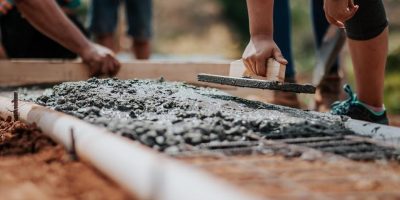The Ansul R-102 Manual is a comprehensive guide for understanding‚ installing‚ and maintaining the R-102 fire suppression system‚ designed for restaurant fire safety‚ with detailed instructions and troubleshooting tips.
1.1 Overview of the Ansul R-102 Fire Suppression System
The Ansul R-102 Fire Suppression System is a pre-engineered‚ wet chemical fire suppression system designed specifically for commercial cooking environments. It is UL 300 compliant‚ ensuring effective protection against fires involving cooking oils and greases. The system consists of a control unit‚ detection system‚ and distribution network‚ delivering a potassium-based wet chemical agent to suppress fires quickly and safely. Its compact design makes it ideal for restaurants‚ food service operations‚ and other high-risk cooking areas. The R-102 system is known for its reliability‚ efficiency‚ and ease of maintenance‚ making it a popular choice for fire safety in commercial kitchens. This overview provides a foundational understanding of the system’s purpose‚ components‚ and operational principles‚ essential for proper installation and maintenance.
1.2 Key Features and Benefits of the R-102 System
The Ansul R-102 Fire Suppression System offers several key features and benefits‚ making it a reliable choice for commercial kitchen fire protection. Its UL 300 compliance ensures effectiveness against high-temperature cooking oil fires. The system uses a potassium-based wet chemical agent‚ which quickly suppresses fires and prevents re-ignition. The compact design allows for easy installation in tight spaces‚ while the automatic detection and activation provide rapid response to fire hazards. Additional benefits include minimal cleanup after discharge‚ reducing downtime for businesses. The system is also designed for ease of maintenance and recharge‚ ensuring long-term reliability. These features make the R-102 an ideal solution for restaurants and food service establishments‚ providing superior fire protection while minimizing operational disruptions.
Installation of the Ansul R-102 System
The Ansul R-102 Manual provides a detailed step-by-step installation guide‚ including design considerations and proper system setup to ensure compliance with fire safety standards and reliable performance.
2.1 Design Considerations for the R-102 System
The Ansul R-102 system is specifically designed for commercial cooking equipment‚ requiring careful planning to ensure effective fire suppression. The system must be configured to protect specific appliances and cooking areas‚ with nozzles strategically placed to deliver the wet chemical agent efficiently. Proper design ensures compliance with UL 300 standards and local fire codes. The manual emphasizes the importance of assessing the kitchen layout‚ identifying potential fire hazards‚ and selecting the appropriate system components. Design considerations also include the placement of the control unit‚ agent tanks‚ and piping to ensure accessibility and reliability. By following the manual’s guidelines‚ installers can create a system that maximizes fire protection while minimizing false discharges. Proper design is critical to the system’s performance and safety in restaurant environments.
2.2 Step-by-Step Installation Guide
The installation of the Ansul R-102 system requires meticulous planning and adherence to the manual’s instructions. Begin by reviewing the design layout and ensuring all components are compatible with the kitchen setup. Install the control unit in an accessible location‚ typically near the cooking equipment. Next‚ mount the agent tank and connect the distribution piping to the nozzles‚ ensuring proper alignment and spacing. Electrical connections must be made according to the wiring diagram‚ with careful attention to the shut-off valves and detection systems. After installation‚ perform a pressure test to verify system integrity. Finally‚ conduct a functional test to ensure all components operate correctly. Always follow the manual’s guidelines to ensure compliance with UL 300 standards and local fire codes. Proper installation is critical for reliable performance and safety in restaurant fire suppression.
2.3 System Configuration and Setup
Proper configuration and setup of the Ansul R-102 system are essential for optimal performance. Begin by reviewing the manual to understand the system’s components and their roles. Ensure the control panel is programmed according to the kitchen layout and specific fire suppression needs. Configure the detection and activation settings to align with UL 300 standards‚ ensuring timely response to fire hazards. Verify the agent distribution network‚ ensuring nozzles are correctly positioned to cover all cooking equipment and ventilation systems. Electrical connections must be securely made‚ and the system should be tested for proper operation. Regularly update the system software and settings to maintain compliance with industry standards. Improper configuration can lead to reduced effectiveness‚ so adherence to the manual’s guidelines is critical. Proper setup ensures reliable fire suppression and protects against potential hazards in commercial kitchen environments.
Maintenance and Servicing
Regular maintenance and servicing are crucial for the Ansul R-102 system. Routine inspections‚ component checks‚ and adherence to schedules ensure optimal performance and reliability.
3.1 Routine Maintenance Tasks
Regular maintenance is essential to ensure the Ansul R-102 system operates effectively. Key tasks include inspecting nozzles for blockages‚ verifying pressure levels‚ and checking cylinder brackets. Cleaning or replacing filters and ensuring proper linkage operation are also critical. Additionally‚ inspecting the system’s electrical connections and testing the manual pull station ensures reliability. Refer to the manual for detailed procedures and schedules to maintain compliance with safety standards.
3.2 Inspection Schedules and Requirements
Regular inspections are crucial for ensuring the Ansul R-102 system remains functional and compliant with safety standards. Monthly visual inspections should be conducted to check for damage‚ leaks‚ or obstructions. Nozzles‚ pressure gauges‚ and system connections must be verified for proper operation. Semi-annual inspections should include checking the system’s links‚ cylinders‚ and discharge nozzles. Annual inspections require a certified technician to perform a detailed examination‚ including testing the system’s electrical components and ensuring all parts are within operational specifications. Adhering to these schedules ensures the system’s reliability and readiness in case of emergencies. Always refer to the manual for specific inspection procedures and documentation requirements to maintain compliance and system integrity.
3.3 Troubleshooting Common Issues
Troubleshooting the Ansul R-102 system involves identifying and addressing common issues promptly to ensure optimal performance. Start by checking for visible damage‚ leaks‚ or obstructions in nozzles and pipes. Low pressure readings or error messages on the control panel may indicate system malfunctions. Verify that all electrical connections are secure and functioning properly. If the system fails to activate during testing‚ inspect the activation links and ensure they are not damaged or corroded. Refer to the manual for specific diagnostic procedures and solutions. For complex issues‚ such as faulty sensors or cylinder problems‚ contact a certified technician. Regular maintenance and inspections can help prevent many common issues‚ ensuring the system remains reliable and ready for emergencies. Always follow the manufacturer’s guidelines for troubleshooting to avoid further complications.
Recharge and System Restoration
Proper recharge and restoration of the Ansul R-102 system ensure optimal functionality after activation. Follow manual guidelines for refilling agents‚ checking leaks‚ and verifying system readiness to maintain fire safety compliance.
4.1 Recharge Procedures After Activation
After the Ansul R-102 system activates‚ proper recharge procedures are essential to restore fire protection. Begin by inspecting the system for damage or leaks. Check the agent level in the cylinder and recharge as needed using genuine Ansul parts. Ensure the system is depressurized before servicing. Follow the manual’s step-by-step guide for refilling the agent and recharging the system. Once recharged‚ perform a system test to verify functionality. Always adhere to safety guidelines and manufacturer recommendations to maintain system integrity and compliance with fire safety standards. Proper recharge ensures the R-102 system is ready for future activations‚ safeguarding your restaurant from fire hazards. Refer to the manual for detailed instructions and diagrams to complete the process accurately. Timely and correct recharge is critical for reliable fire suppression performance.
4.2 Post-Discharge Servicing Requirements
After the Ansul R-102 system has been recharged‚ additional servicing is required to ensure optimal performance. Conduct a thorough inspection of all system components‚ including cylinders‚ hoses‚ and nozzles‚ for any damage or leaks. Clean or replace components as needed to maintain system integrity. Verify that the suppression agent is at the recommended level and that all electrical connections are secure. Perform a final system test to ensure proper functionality. Always follow the manufacturer’s guidelines and safety protocols during servicing. Document all maintenance activities for future reference. Regular post-discharge servicing ensures the R-102 system remains reliable and ready to protect against fire hazards. Proper maintenance also extends the system’s lifespan and ensures compliance with fire safety regulations. Refer to the manual for detailed servicing procedures and recommendations.
Training and User Education
The Ansul R-102 Manual provides detailed training programs for owners and operators‚ emphasizing best practices for system operation‚ maintenance‚ and safety to ensure effective fire suppression and compliance with standards.
5.1 Owner/Operator Training Programs
The Ansul R-102 Manual includes comprehensive training programs tailored for owners and operators‚ ensuring they understand system operation‚ maintenance‚ and safety protocols. These programs emphasize hands-on training sessions‚ covering key topics such as system components‚ activation procedures‚ and routine maintenance tasks. The training also focuses on compliance with industry standards and best practices for fire suppression in restaurant environments. By completing these programs‚ owners and operators gain the knowledge and skills needed to ensure the R-102 system functions effectively in emergency situations. Additional resources‚ such as instructional videos and detailed manuals‚ are provided to support ongoing education and system familiarity. This structured approach ensures that users are well-prepared to handle the system confidently and safely.
5.2 Best Practices for System Operation
Best practices for operating the Ansul R-102 system emphasize regular inspections‚ adherence to the manual‚ and proper training. Always ensure the system is fully charged and free from obstructions. Conduct daily visual checks of the control panel and cylinders to verify system readiness. Properly position nozzles to cover all cooking equipment‚ and ensure they are not blocked by kitchen utensils or appliances. Train staff to activate the system only in emergency situations and to follow post-discharge procedures. Maintain clear access to the system for easy servicing and inspections. Avoid modifying the system without authorization‚ as this could compromise its effectiveness. Regularly review the manual and stay updated on any software or hardware updates. By following these guidelines‚ users can ensure optimal performance‚ safety‚ and compliance with industry standards.
Troubleshooting Guide
The Ansul R-102 manual includes a detailed troubleshooting guide to help users identify and resolve common system issues‚ ensuring optimal performance and safety.
6.1 Identifying Common System Issues
The Ansul R-102 manual provides detailed guidance on identifying common system issues‚ such as low pressure in cylinders‚ faulty detection systems‚ or malfunctioning control panels. Users can perform visual inspections‚ check pressure gauges‚ and monitor alarm systems to detect problems early. The manual also outlines error codes and their meanings‚ helping technicians diagnose issues efficiently. Regular maintenance tasks‚ such as checking agent levels and verifying nozzle functionality‚ are emphasized to prevent system failures. Additionally‚ the manual recommends testing the system periodically to ensure proper operation. By following these steps‚ users can address potential issues before they escalate‚ ensuring the R-102 system remains reliable and effective in protecting against fire hazards. Proper troubleshooting techniques are essential for maintaining fire safety in commercial kitchens. Always refer to the manual for specific instructions and safety precautions.
6.2 Advanced Troubleshooting Techniques
Advanced troubleshooting for the Ansul R-102 system involves detailed diagnostic procedures to resolve complex issues. The manual recommends using specialized tools to analyze system performance‚ such as pressure testers and electrical multimeters. Technicians should inspect the control panel for error codes and cross-reference them with the manual for precise solutions. Additionally‚ checking the pneumatic system for leaks or blockages is crucial‚ as these can disrupt agent distribution. The manual also advises performing a full system test after repairs to ensure functionality. Advanced techniques may include recalibrating sensors‚ replacing faulty solenoids‚ or verifying the integrity of the agent distribution network. Always refer to the manual for step-by-step instructions and safety guidelines when addressing intricate system malfunctions. Proper advanced troubleshooting ensures the R-102 system operates reliably‚ providing optimal fire protection for commercial kitchens. Regular training and familiarity with the manual are essential for effective troubleshooting.
Product Specifications
The Ansul R-102 system is designed for commercial kitchens‚ meeting UL300 standards‚ with specifications detailed in the manual (Part No. 418087-11)‚ ensuring reliable fire suppression performance.
7.1 Technical Specifications of the R-102 System
The Ansul R-102 system is designed to meet UL300 standards for commercial kitchen fire suppression. It utilizes a wet chemical agent‚ specifically designed to suppress cooking oil and grease fires. The system includes a network of distribution pipes‚ nozzles‚ and a control unit. The agent is stored in cylinders‚ which are typically rated for specific pressure ranges. The manual specifies the maximum and minimum cylinder capacities‚ ensuring proper coverage for various kitchen layouts. The system operates automatically via a heat-activated fusible link or manually through a pull station. Technical details‚ such as pipe sizing‚ nozzle placement‚ and agent concentration‚ are outlined to ensure optimal performance. Compliance with industry standards is a key focus‚ making the R-102 a reliable choice for fire safety in commercial cooking environments.
7.2 Compliance with Industry Standards
The Ansul R-102 system is fully compliant with industry standards‚ including UL300 for commercial cooking fire suppression systems. It meets NFPA regulations and local fire codes‚ ensuring reliability and safety. The manual emphasizes adherence to these standards during installation‚ maintenance‚ and operation. Compliance is verified through rigorous testing and certification processes‚ guaranteeing the system’s effectiveness in real-world scenarios; Regular inspections and servicing‚ as outlined in the manual‚ are crucial to maintaining compliance and ensuring the system’s readiness. By following the guidelines‚ users can trust the R-102 to perform as expected‚ protecting lives and property in commercial kitchen environments.
Manual Overview
The Ansul R-102 Manual provides a detailed guide for installation‚ maintenance‚ and operation of the fire suppression system‚ ensuring user safety and compliance with industry standards.
8.1 Understanding the R-102 Manual Structure
The Ansul R-102 Manual is structured to provide clear‚ organized information for users. It begins with an introduction‚ followed by installation‚ maintenance‚ and troubleshooting sections. The manual includes detailed technical specifications‚ compliance details‚ and visual aids like animations. Each section is designed for easy navigation‚ ensuring users can quickly find relevant information. The logical flow helps users progress from basic understanding to advanced operations. Key features include step-by-step guides‚ inspection schedules‚ and best practices for system operation. The manual also covers training programs and video resources‚ enhancing user education. By following this structure‚ users can master the R-102 system’s installation‚ maintenance‚ and operation efficiently. The comprehensive layout ensures all aspects of the fire suppression system are covered‚ making it an essential resource for owners and operators.
8.2 How to Read and Interpret the Manual
Reading and interpreting the Ansul R-102 Manual requires a systematic approach to ensure proper understanding. Begin by reviewing the table of contents to familiarize yourself with the structure. Start with the introduction to grasp the system’s purpose and key features. Use the index to locate specific topics quickly. Pay attention to headings and subheadings‚ as they guide you through installation‚ maintenance‚ and troubleshooting. Visual aids like diagrams and animations complement the text‚ aiding comprehension. Highlight important sections and take notes for reference. Cross-reference technical specifications with industry standards to ensure compliance. Utilize the troubleshooting guide for resolving common issues. Refer to the video resources for visual demonstrations. By following these steps‚ users can effectively interpret the manual‚ ensuring safe and efficient operation of the R-102 system. Regular review and updates are recommended to stay informed about system advancements.
Videos and Animations
The Ansul R-102 Manual includes video reviews and animations that provide visual demonstrations of the system’s operation and installation‚ offering users a comprehensive understanding of its functionality.
9.1 Video Review of the R-102 Installation Manual
The video review of the Ansul R-102 Installation Manual provides a detailed visual guide‚ helping users understand the system’s components‚ installation process‚ and operational features. Produced by Tyco Fire Protection Products‚ this resource is designed to complement the written manual‚ offering a step-by-step walkthrough of key procedures. It covers topics such as system design‚ cylinder installation‚ and nozzle placement‚ ensuring proper setup for effective fire suppression. The video also includes animations and real-world scenarios to demonstrate how the R-102 operates in restaurant environments. By watching this review‚ users can gain a clearer understanding of the manual’s instructions‚ reducing the risk of errors during installation. This visual aid is particularly useful for technicians and operators who prefer hands-on learning or need to verify their installation techniques. It serves as an essential companion to the written manual‚ enhancing overall comprehension and compliance with safety standards.
9.2 Animation of the R-102 Working Principle
The animation of the R-102 working principle‚ produced by Tyco Fire Protection Products‚ visually demonstrates how the UL300-compliant system operates in restaurant fire suppression scenarios. This engaging resource illustrates the sequence of events‚ from fire detection to agent discharge‚ providing a clear understanding of the system’s functionality. The animation highlights key components‚ such as the detection system‚ agent storage‚ and distribution nozzles‚ and shows how they work together to suppress fires effectively. Designed for both educational and training purposes‚ the animation is particularly useful for restaurant staff‚ owners‚ and technicians. It offers a simplified yet detailed visual explanation‚ making it easier to grasp the system’s operation without delving into complex technical manuals. This resource is ideal for training sessions or as a quick reference for understanding how the R-102 protects against kitchen fires.
The Ansul R-102 Manual serves as a vital resource for understanding and managing the R-102 fire suppression system‚ ensuring optimal performance and safety in restaurant settings. By covering installation‚ maintenance‚ troubleshooting‚ and training‚ the manual provides a holistic approach to fire safety. Its detailed instructions and visual aids‚ such as animations‚ make it accessible to both professionals and end-users. Regular updates and adherence to industry standards ensure the manual remains a reliable guide. Owners and operators are encouraged to refer to this manual regularly to maintain compliance and ensure the system’s effectiveness. By following the guidelines outlined‚ users can maximize the R-102’s potential‚ safeguarding lives and property from kitchen fires. This comprehensive manual underscores the importance of proper system management for reliable fire protection.



Leave a Reply
You must be logged in to post a comment.